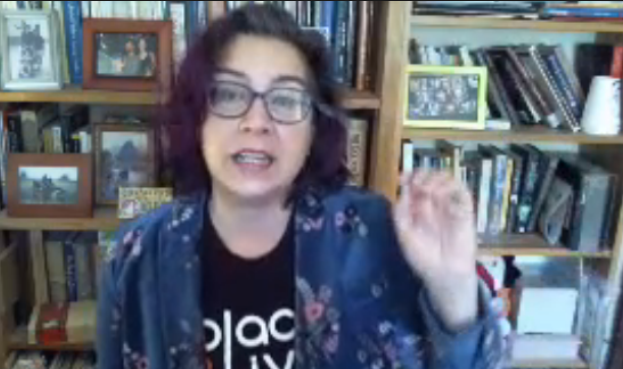
In May I gave a talk to the Lehigh Valley Association of Independent Colleges group for an information literacy seminar. I was asked by the organizers to design and deliver an interactive piece for the talk. Given my theme on the importance of relationships and human connections that take into account power and position, I wanted to give participants a way to reflect on their own information practices, as a way to thinking about not just what they do around information, and where they get their information from, but also with whom do they think about/process/evaluate/criticize/decide to reject various kinds of information?
At this point I’ve been working with various kinds of practice mapping for 10 years. Visitors and Residents mapping was intended to be a way to get people to reflect on their digital practices, and eventually Lawrie Phipps and I came up with triangle practice mapping so that we could avoid the trap of people trying to pigeonhole themselves (or feel they were being pigeonholed) within value-laden labels.
In the workshops I have facilitated, it becomes clear quite quickly that it is difficult to think about our digital practices without eventually arriving at a necessary conversation about which people we are interacting with in digital places and on digital platforms. It is likewise difficult to think about the information we seek and trust (or distrust) without involving the people we associate with that information. Who wrote the article? Who is the story about? Who is upset about that book? Whose interests are threatened by that exposé? Whose priorities are being ignored? Who do you talk to about the articles you read? Whose social media feeds do you get trusted information from? Whose do you avoid?
So, I tried to adapt the idea of triangle digital practice mapping to help people think about their information practices.
It looks like this (the image is also available here):
While the alliteration is fun, the domains Political, Personal, and Professional could be other things. If you are working with students, you could have them map information they use for Studies, for Work, and for Private Life. If you are working with faculty, you could have them map information they use for Research, for Private Life, and for Teaching. As with digital practice mapping, the domains themselves matter less than the conversation and reflection that you are trying to provoke.
When the LVAIC folks did this mapping, they went into breakout rooms and then came back into the main conference room to feed back on how it went. Some were surprised at how few people there were in their information network. Many had never taken the time to really think about the role that people played in their information practices. They only had less than 10 minutes to do the exercise, so there was a lot left that we could have discussed that we just didn’t have time for.
I think there are many conversations that can emerge from this kind of mapping. I’d be interested to see what it looks like when people get to be in a room together (physical or digital) and really spend time with their information practice maps, and comparing their practices and networks to those of other people. What differences will they find? What similarities?
I’d welcome feedback from people who try out this mapping for themselves, or in a group. I’m also trying to find places where we can experiment with this mapping in workshop contexts, so if you have ideas please let me know.